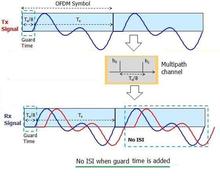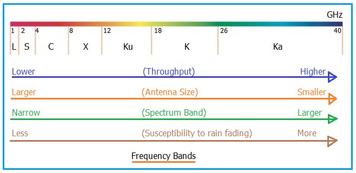
ISI vs ICI: Inter Symbol Interference and Inter Carrier Interference
Explains the differences between Inter Symbol Interference (ISI) and Inter Carrier Interference (ICI), focusing on their causes and mitigation techniques in OFDM systems.
Showing 20 posts (Page 67 of 162)
Advertisement

Explains the differences between Inter Symbol Interference (ISI) and Inter Carrier Interference (ICI), focusing on their causes and mitigation techniques in OFDM systems.
Explore the essential ISM frequency bands and their center frequencies for industrial, scientific, and medical applications. A concise reference table included.

Explore the pros and cons of implementing an ISO 9001 Quality Management System (QMS). Understand its benefits, drawbacks, and key considerations.
ITS-90 reference table for common thermocouple types (J, K, T, N, E, B, R, S), providing thermoelectric voltage at various temperatures.

A concise comparison of JESD204A and JESD204B, highlighting the key differences in features, lane rates, clocking, and synchronization support.

Explore the benefits of JESD204 interfaces (JESD204B and JESD204C) in terms of speed, size, cost, and features compared to older interfaces.

This article compares JESD204B and JESD204C, highlighting key differences in data rate, encoding, latency, and other features of these high-speed interface specifications.
Explore the key differences between JESD204B and LVDS, including lane rates, clocking, synchronization, and applications.

Explore the structural and operational differences between JFETs, MOSFETs, and MESFETs, highlighting their unique characteristics and applications.

Explore the pros and cons of Jio WiFi Calling (VoWiFi), a technology that enables voice calls over WiFi networks, improving call quality and overcoming signal issues.

Explore the differences between JUGFET (Junction Gate Field-Effect Transistor) and MOSFET (Metal-Oxide-Semiconductor Field-Effect Transistor), including operation, advantages, and applications.

Explore K band frequency characteristics, advantages like balanced throughput and antenna size, and applications in radar, satellite, and astronomy.
Overview of K-Line protocol, its frame format, and commonly used testing tools in automotive systems for communication and diagnostics.
Explore the K-Line protocol, its benefits for automotive communication, including simplicity and reliability, and its drawbacks like low data rates.
Explore the comparison of K-line and L-line bus protocols in automotive diagnostics, highlighting their key differences, similarities, and interface details.

Explore Ka band frequencies (27-40 GHz), advantages like high-speed data, and applications in satellite communication, radar, and space telescopes.
A comparison of Kappa 438 laminate with FR4, highlighting the advantages of Kappa 438 for PCB manufacturing and RF applications.

Understand the fundamental differences between Kirchhoff's Current Law (KCL) and Kirchhoff's Voltage Law (KVL) for circuit analysis, focusing on current flow and voltage drops.

Explore Klystron and Gunn diode microwave test benches, their block diagrams, and components used for microwave module testing.

Explore the advantages and disadvantages of klystron tubes, highlighting their characteristics, applications, benefits, and limitations in microwave technology.
Advertisement